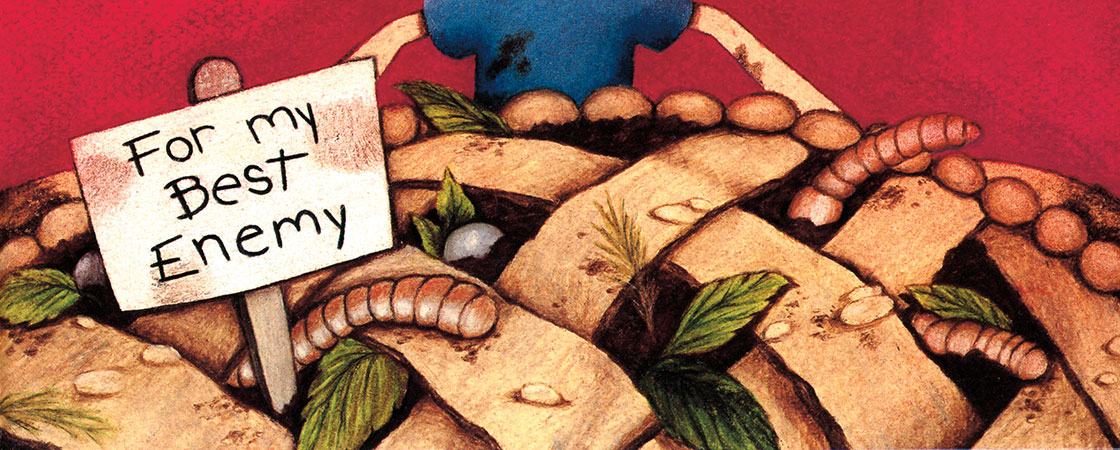It should’ve been a perfect summer. My dad helped me build a tree house. My sister was at camp. And I was on the best baseball team in town. It should’ve been a perfect summer. But it wasn’t.
It was all good until Jeremy Ross moved into the neighborhood. I didn’t like Jeremy. He laughed when he struck me out. He had a party on his trampoline, and I wasn’t invited.
Jeremy Ross was the only person on my enemy list. I never even had an enemy list before. But he came along, and I needed one. I hung it up in my tree house, where Jeremy Ross was not allowed.
Dad understood stuff like enemies. He told me that when he was my age, he had enemies too. But he knew a way to get rid of them.
He pulled an old recipe book off the kitchen shelf. Inside was a scrap of paper with faded writing. Dad squinted at it.
“Enemy Pie,” he said, satisfied.

